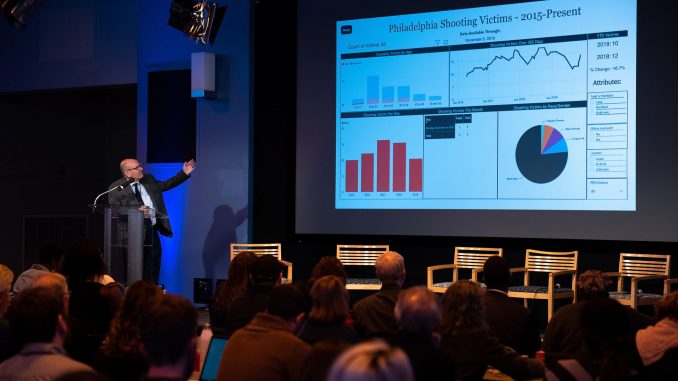
A former Temple University administrator has created an online tool to track gun violence in Philadelphia dating back to 2015.
The Philadelphia Shooting Victims Dashboard is a project of The Initiative for Better Gun Violence Reporting, a nonprofit whose mission is to “inform a new set of best practices for journalists reporting on gun violence.” The project was founded by Jim MacMillan, a fellow in residence at the Reynolds Journalism Institute, and The Philadelphia Association of Black Journalists.
“The goal here was to make data more accessible,” said MacMillan, the former assistant director of external affairs at the Klein College of Media and Communication. “The dashboard was meant to make it easier for journalists and the public at large to find the data.”
“The idea is that more information is more likely to reduce misperception,” he added. “I think visualizing data can punctuate a clear perception of information found in the data.”
Normally, fatal and nonfatal shootings combined are difficult to track, said Caterina Roman, an associate professor of criminal justice at Temple, adding that the dashboard breaks them down by geography and age group.
“If you asked 100 people, it always seems like people will say crime is worse than it is,” Roman added. “People will be empowered to understand what is really going on.”
“Students might be alarmed when they see all these Temple alerts without knowing the broader context for violence,” Roman added. “It might make it appear that the area around Temple is more violent than it is.”
Since 2015, 712 people have been shot in Philadelphia’s 22nd police district, which encompasses Main Campus, Brewerytown and Strawberry Mansion, according to the dashboard, which was approximately 11 percent of shootings in the city.
In 2019, 136 have been shot in that district, which was approximately 10 percent of shootings in the city.
One of the limitations of the dashboard is that it does not include threats of gun violence, MacMillan said.
Additionally, MacMillan is hoping to make data, like the times of day that people were shot and whether a person was shot indoors or outdoors, accessible in the dashboard, he said.
Jessica Beard, a trauma surgeon and researcher at the Lewis Katz School of Medicine, said the dashboard is also limited in that it does not track suicides.
In 2017, approximately 60 percent of all gun-related deaths in the United States were suicides, according to the Centers for Disease Control and Prevention.
“My one criticism of the dashboard is that it’s limited because it’s not a complete picture of gun violence,” Beard added.


Be the first to comment